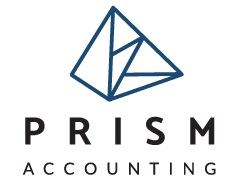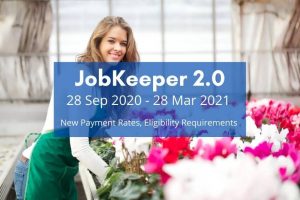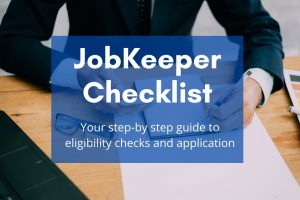The Government will provide tax-free cash flow boosts between $20,000 and $100,000 to small and medium businesses and non-for-profit entities that make eligible payments that are subject to withholding obligations.
Payments will be made in two phases. First Cash Flow Boost Payments will be made for the periods from March 2020 to June 2020. Second Cash Flow Boost will be made for the periods from June to September 2020 to entities that were eligible for the first cash flow boost.
First Cash Flow Boost Payments
The first cash flow boost payment is to be made by the ATO for the periods from March 2020 to June 2020.
How to apply for a Cash Flow Boost payment?
Eligible businesses do not need to apply for payments. Payments will be delivered automatically when the business lodges its Activity Statement for the relevant period.
Amounts of payment
Amounts of payments will be based on the amount of PAYG withholding reported on the Activity Statements. Eligible businesses will receive a credit equal to 100% of the amount withheld, up to a maximum of $50,000 for the March-June 2020 period. The minimum credit of $10,000 will be applied, even if the amount required to be withheld from payments is zero. Entities may be eligible to receive further payments if the total amounts of PAYG withholdings exceed $10,000 for the first cash flow boost period.
Quarterly Lodgers
Quarterly lodgers will receive the credits as follows:
1 January – 31 March Quarter (lodgment due date 28 April 2020)
Entities will receive a payment equal to 100% of the withholding amount, up to a maximum amount of $50,000. If the amount of withholding is less that $10,000, entities will receive a minimum payment of $10,000.
1 April – 30 June 2020 Quarter (lodgment due date 28 July 2020)
If the amount of withholding in the previous quarter was less than $10,000, entities will be eligible to receive further payments once the total amount of withholdings for both quarters exceeds $10,000, to make up to the total of 100% of withholdings.
If the amount of withholding in the first quarter was more than $10,000, entity will receive further payment equal to 100% of withholdings for the quarter.
The total of all first cash flow boosts payment cannot exceed the maximum limit of $50,000.
Monthly Lodgers
Monthly lodgers will receive the credits for the below periods as follows:
March 2020 (lodgment due date 21 April 2020)
Entities will receive a payment equal to 300% of the withholding amount reported on March statement, up to a maximum amount of $50,000. March amounts are tripled to compensate for the fact that January and February withholdings amount are not included in the Activity Statement. Effectively, January and February withholdings are deemed to be the same as in March, irrespective of the actual amount withheld for these months. The minimum payment will be $10,000.
Periods of:
April 2020 (lodgment due date 21 May 2020)
May 2020 (lodgment due date 21 June 2020)
June 2020 (lodgment due date 21 July 2020).
Payments for subsequent periods will equal to 100% of PAYG Withholding, up to the total limit of $50,000 for the First Cash Flow Boost period.
Eligibility Criteria:
1. The entity must be a small or a medium business entity (broadly speaking, having an aggregated turnover of less than $50 million) or a Non-for-Profit entity under the same turnover threshold, for the most recent income year for which a Notice of Assessment was issued.
Alternatively, the Commissioner must be satisfied on a reasonable basis that the entity is likely to be a small or a medium business in 2020. Activity statements do not usually provide sufficient information to determine if an entity would satisfy a turnover test, so further information may need to be provided to the Commissioner to prove eligibility, which would cause delay of payments.
2. The entity makes an eligible payment that is subject to PAYG withholding obligations (even if no amount is actually withheld) in the period. Eligible payments include:
- Payments to employee (salary or wages)
- Payments to company director (director fees)
- Return to work payments
- Payments to contractors subject to voluntary agreement to withhold
- Payments under labour hire arrangement
- Payments in respect of termination of employment, including unused leave payments) to the extent they are included in the individual’s assessable income.
- Benefit and compensation payments (e.g. parental leave, accident or sickness payment)
Note, eligible payments do not include payments where TFN or ABN was not quoted, amounts attributed to an individual under PSI regime, payments of dividends to sole directors/shareholders of incorporated entities or payments of distributions to trust beneficiaries.
3. The entity has notified the Commissioner of their entitlement in the approved form. In practice this means that entities will be entitled to payment once they lodge their activity statement for the relevant period.
4. The entity (other than Non-for Profit) held an ABN on 12 March 2020.
5. The entity derived assessable income in the 2018 – 2019 income year or made one or more supplies for consideration in the course of an enterprise it carried on within Australia in tax periods commencing after 1 July 2018 and ending before 12 March 2020 and the Commissioner was notified of such income or supplies on or before 12 March 2020 or within such further time as the Commissioner allows.
6. The entity (or an associate or agent of an entity) has not engaged in a scheme for the sole or dominant purpose of obtaining cash flow boost payment.
Second Cash Flow Boost Payments
The entities entitled to First cash Flow Boost payments will receive Second Cash Flow Boost payments. The payments are available to all entities that received any amount of the first cash flow boost, even if the circumstances of the entity have subsequently changed, provided the entity lodges a GST return for the relevant period and notifies the Commissioner in the approved form.
Amounts of payment
The total amount of second cash flow boost payments will be equal to the total amount of first cash flow boost payments.
The second cash flow boost payments will be payable in equal instalments for:
• the months of June, July, August and September 2020 for monthly lodgers (at 25% for each period);
• the June and September 2020 quarters for quarterly lodgers (at 50% for each period).
The second cash flow boost payments will generally be made on lodgment of the activity statement containing the GST return of the entity for the period.
The second cash flow boost payments are not subject to the minimum payment amount or total payment cap that applies to the first cash flow boost. However, the payment is subject to the integrity provisions.
Cash Flow Boost FAQ:
How will the Cash Flow Boost payments be made?
The first payment will be applied from 28 April 2020 (due date for quarterly lodgers). Businesses lodging Activity Statements earlier will not receive a credit prior to this date. An entity may be eligible to apply for a deferral of lodgement.
The Commissioner may direct how the first and second cash flow boost payments are made to an entity. Payments can be made by way of allocating the amount as a credit to the ATO Account to reduce the amount payable on the same activity statement or as a credit against other tax debts.
Generally, if the payment exceeds any tax liabilities of the entity, the amount will be refunded to the entity. The Commissioner also has discretion in certain circumstances, to refund amounts instead of applying a credit against other tax liabilities.
Update: on 23 April 2020, the ATO has announced that Cash Flow Boost Payment credit will only be applied to offset liabilities arising from the same activity statement. Any remaining amounts of credit will be refunded. They will not be used to offset against other tax debts (e.g. amounts owing on a different activity statement or on income tax account). However, the excess may still be applied against outstanding debts with other Australian Government Agencies.
In certain circumstances, the Commissioner may exercise the powers to retain refunds where there is reasonable suspicion of fraud or evasion, or of phoenix activity.
What if the amount is overpaid?
If an amount of any cash flow boost is paid to an entity to which it was not entitled, the entity must pay the amount of the overpayment to the Commissioner. This would include situations where the entity entered into a scheme for the sole or dominant purpose of entitling the payments. General Interest Charge applies to the overpaid amounts from the date the payment was made until it is repaid.
Is the cash Flow Boost Payment taxable to the entity?
All cash flow boost payments are non-assessable non-exempt income, which means they are not taxable to the entity. However, care must be taken if the entity is a company. If tax-free payments are subsequently distributed to shareholders, they may give rise to unfranked dividends taxable in the hands of shareholders at their marginal tax rates.
Can I get Cash Flow Boost on attributed PSI amounts if PAYG is withheld?
Cash Flow Boost Payments only apply to payments subject to withholding obligations under Subdivision 12-B, 12-C or 12-D in Schedule 1 to the 30 Taxation Administration Act 1953.
Attributed PSI income is not an eligible payment for Cash Flow Boost as it is not included in any of these categories of payments. Withholding obligations apply to attributed PSI under Div 13 of Schedule 1 to the Tax Administration Act 1953.
Where PSI is promptly paid to the individual as a salary or wage instead of being attributed as PSI, the payment is eligible. However, integrity provisions should be considered when making this decision (see below).
Update: Treasury Law Amendment (2020 Measures No.3) Bill was been introduced to the Parliament on 12 June 2020 to extend application of Cash Flow Boost Payments to payments subject to PSI regime. The changes are not the law yet, however, once the Bill is passed and receives Royal Assent, the changes will apply retrospectively from the start of the Scheme.
Can I recharacterise certain payments from my family business as wages to access Cash Flow Boost?
There are integrity measures built in the eligibility criteria for Cash Flow Boost. You are not eligible for Cash Flow Boost if you (or your agent) enter into a scheme for the sole or dominant purpose of making yourself entitled to Cash Flow Boost Payments, or increasing the amount of these payments.
If you artificially restructure your payments (e.g. reclassify dividends or trust distributions as salary) or otherwise change the way you operate your business to access payments you would otherwise not be entitled to receive, your eligibility may be denied or you may be required to repay the payments back together with any applicable interest charges.
Where can I find more information about Cash Boost Payments for Employers?
For more information about Cash Flow Boost Payments for Employers as part of Economic Response to COVID-19 (Coronavirus) Federal Government Stimulus Package, check the links below:
- Treasury Fact Sheet “Boosting Cash Flow for Employers”
- Boosting Cash Flow for Employers (Coronavirus Economic Response Package) Bill 2020
- Explanatory Memorandum
- Boosting cash flow for employers – ATO Resources
Need Help?
If you need assistance with checking eligibility for Cash Flow Boost, JobKeeper and other Government Incentives for businesses, we are able to help! Send us an enquiry or call our office to discuss your situation.
Disclaimer: All the information provided on this website is of general nature and does not constitute tax, legal or financial advice. It does not take into account your personal circumstances and is not intended to replace consultation with a qualified professional.






